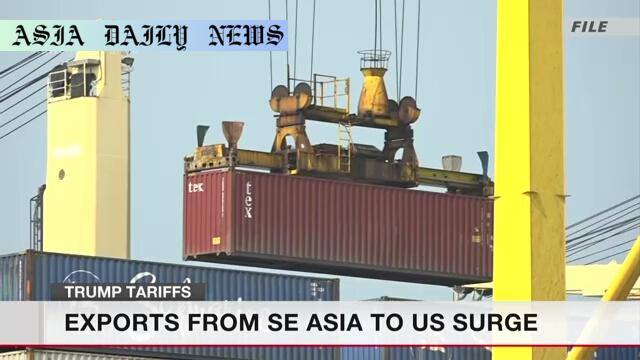Exports — Exports from Malaysia, Vietnam, and Thailand to the US see significant growth amidst tariff concerns.

Exports Surge Ahead of Tariff Increases
Exports from Southeast Asia to the United States have reached unprecedented levels in recent months. The surge comes in response to impending tariff hikes as the US government considers imposing significant import duties on goods from Vietnam, Thailand, and Malaysia. In April, exports saw remarkable increases: up 45% in Malaysia, 34% in Vietnam, and 23% in Thailand, compared to the same period last year. This growth has been driven by industries such as electronic components, apparel, and rubber products, including automobile tires, which have been in high demand in the United States.
Tariff Threats and Economic Pressures
The Trump administration’s proposed tariffs include a 46% hike for Vietnamese goods, 36% for Thai products, and 24% for Malaysian exports. These steep rates have created urgency among Southeast Asian exporters to push their products to the US before the tariffs take effect. Officials in the region are now scrambling to negotiate favorable trade terms while maintaining their export momentum. However, this accelerated trading activity has raised concerns about potential repercussions, including the likelihood of a decline in exports in the second half of the year as suppliers deplete their stockpiles.
Striking a Balance Between Growth and Long-Term Stability
Despite the current surge, the long-term trade dynamics between Southeast Asia and the United States remain uncertain. While shipping goods ahead of time has proven to be a short-term solution, experts warn that this strategy could strain supply chains and reduce export capabilities in subsequent months. The focus now lies on balancing immediate economic gains with sustainable trade practices. Regional officials are attempting to mitigate these challenges through tactful diplomacy, emphasizing the importance of mutual economic benefits in maintaining a healthy trade relationship with the United States.
Commentary
Navigating the Complex Trade Network
The surge in exports from Southeast Asia to the United States underscores the intricate nature of global trade networks. While the immediate numbers appear promising, they reveal deeper vulnerabilities in the existing trade ecosystem. The scramble to preemptively ship goods ahead of tariff hikes highlights how policy decisions—often unilateral—can disrupt supply chains and create ripples across economies. It’s essential to recognize that these surges are not merely economic wins; they are responses born out of fear and uncertainty about future market conditions.
The Dual Impact of Tariff Policies
Tariff hikes, while intended to create economic reciprocity, often carry unintended consequences. In this case, Southeast Asian countries are experiencing a short-lived economic boom at the expense of long-term stability. The concern here is that an over-exertion of production capacities and inventory ahead of tariff deadlines could lead to a supply crunch in the coming months. It is paramount for policymakers on both sides to consider these dynamics and ensure that diplomacy prevails over immediate economic retaliation.
Hope for Sustained Growth Through Collaboration
The current scenario offers an important lesson in global economic interdependence. While Southeast Asian countries, particularly Malaysia, Vietnam, and Thailand, are showcasing their capabilities to meet surging demand, the need for a sustainable trade relationship with the US is evident. Strategic collaborations, fair trade policies, and proactive negotiations will be pivotal in ensuring that the gains seen today do not result in a deficit tomorrow. After all, true economic growth lies in sustainability, not transitory spikes created by fear of policy changes.


